Tackling Invasives Without Chemicals―But Not Without Help
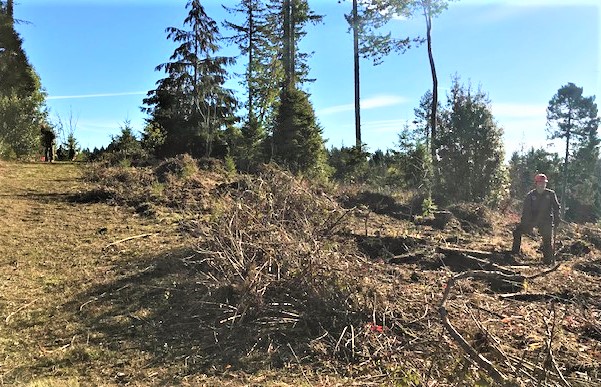
Artemio and Edana Paz have lived on and cared for their forest outside of Springfield for over 50 years. This year for the first time they sought help controlling invasive weeds from a unique source.
Artemio and Edana have poured love and sweat equity into their land for over 50 years, and have secured certification upon certification for both the forest and the blueberry farm at its center. On top of the forest being FSC®-certified through NNRG’s group certificate, the farm is also Salmon-Safe and Oregon Tilth Organic certified. This means no chemical pesticides or herbicides are used on the property (and due to Artemio’s grassroots activism, no chemicals are used on nearby properties either).
Artemio, who makes his living as an architect when he’s not farming blueberries, describes his family’s philosophy: “We look at the complexity of our timber landscape, and it’s so rich and filled with biological stories that we just want to kind of watch it. We don’t want to intervene very often.”
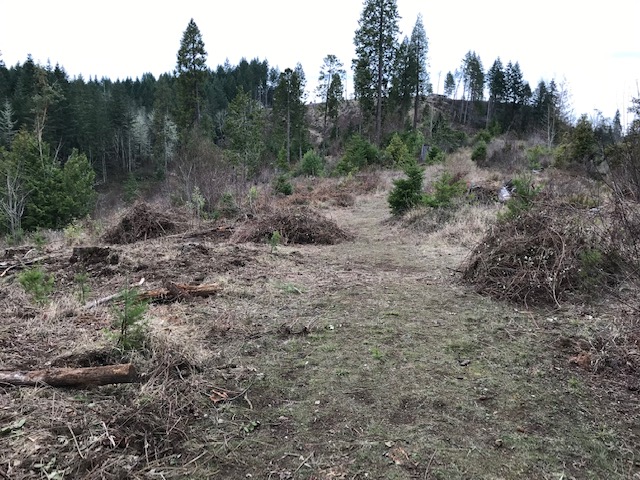
Farming blueberries and keeping a forest invasives-free without using chemicals requires work and ingenuity. On the farm, the Paz’s have gotten inventive, using natural solutions like kelp seaweed, glacial rock dust amendments to keep the soil healthy and weed-free. They rely on bumble bees from their forest to pollinate the blueberries every summer, and Artemio insists his native bees are better at this than any he might bring in from elsewhere, pollinating at 8-10 times the rate of others.
The Paz’s have also committed to keeping chemicals out of their diverse, mixed-age forest, which includes cedar, hemlock, Doug-fir, white fir, broadleaf maple, vine maple, madrone, yew, and spruce.
Since a harvest in 2014, patches of invasives have spread along a high ridge in the southern quarter of the property. Himalayan blackberry and Scotch broom are the main culprits. And as anyone who’s tried to pull out a full-grown Scotch broom or spent an hour grubbing up blackberry root crowns knows—invasives removal is hard work. This year for the first time, the Paz’s got help from a group well-accustomed to putting sweat equity into natural landscapes: the Northwest Youth Corps.
In a nutshell, the Northwest Youth Corps provides paid work experience in restoration and conservation to youth and young adults. Their mission is to offer “a challenging education and job-training experience that helps youth and young adults from diverse backgrounds develop the skills they need to lead full and productive lives.”
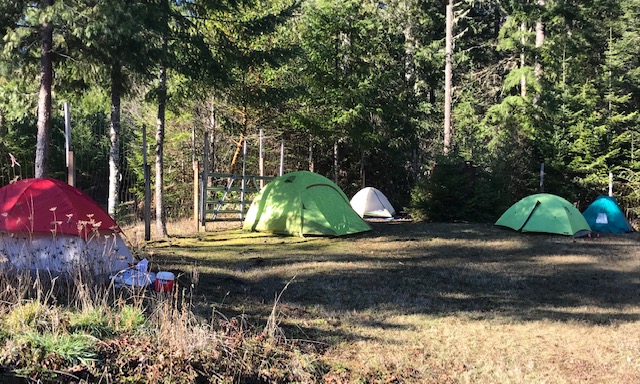
While most of their projects involve public lands, the Corps can be hired to work on private properties. This past January, a team from Northwest Youth Corps spent five days eradicating invasives from the Paz’s forest.
Artemio speaks effusively about the experience, which was clearly a rewarding one. On one occasion, the Paz’s invited the group members into their home for food and conversation. The discussion topics ranged from environmental bills in the Oregon legislature to clean energy to environmental philosophy. At night the Corps members camped next to the blueberry field.
In just five days, the Corps mitigated 80-85% of the areas with the worst invasives, freeing up Artemio and Edana’s time for cultivating both the blueberries and the architecture business. Artemio believes the brunt of the invasives work is now finished, and that 12-15 more years of natural forest regeneration will be enough to keep invasives out of the forest for good.
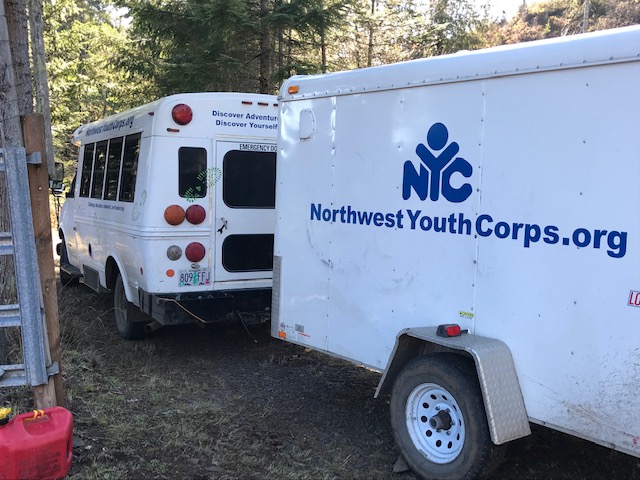
Artemio’s chemical-free approach to forest and farm stewardship involves extra effort—in the form of amendment beds, hand-pulling weeds, grassroots activism, and seeking help from unlikely sources—but he fervently believes in the low-impact philosophy. He draws inspiration from the 1997 book by Sandra Steingraber, Living Downstream, which focuses on toxics in the environment.
Steingraber writes, “We are all musicians in a great human orchestra, and it is now time to play the Save the World Symphony. You are not required to play a solo, but you are required to know what instrument you hold and play it as well as you can. You are required to find your place in the score. What we love we must protect. That’s what love means. From the right to know and the duty to inquire flows the obligation to act.”
The Paz’s have picked their action. “We manage the land in a way that minimizes harm to our watershed environment and our neighbors, ” Artemio says.
“And we consider the fish, and all the wildlife here, our neighbors.”
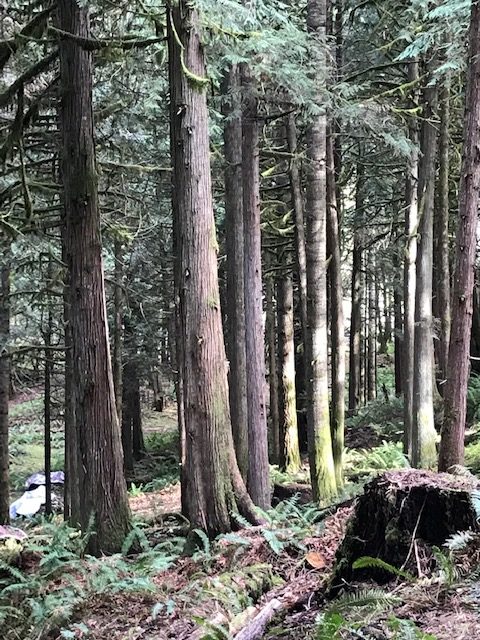


Leave a Reply